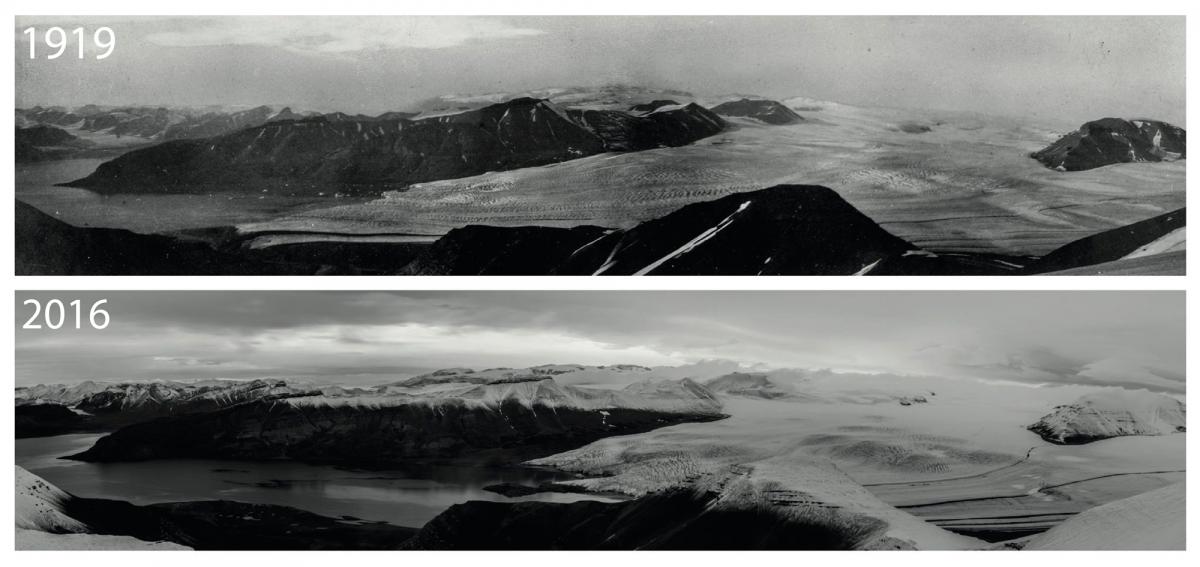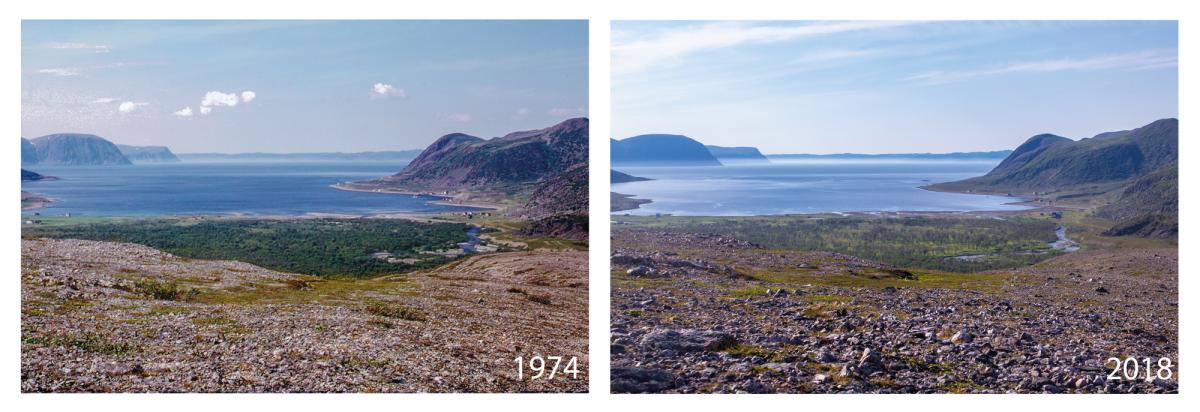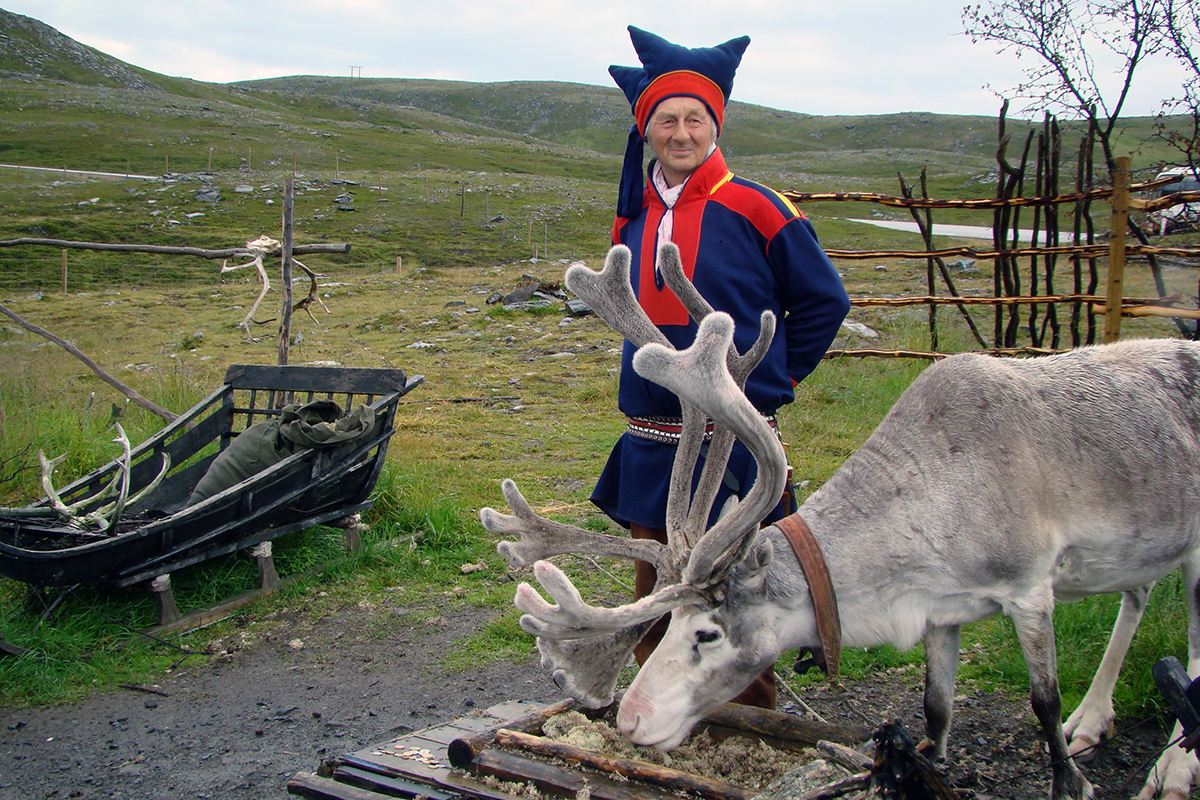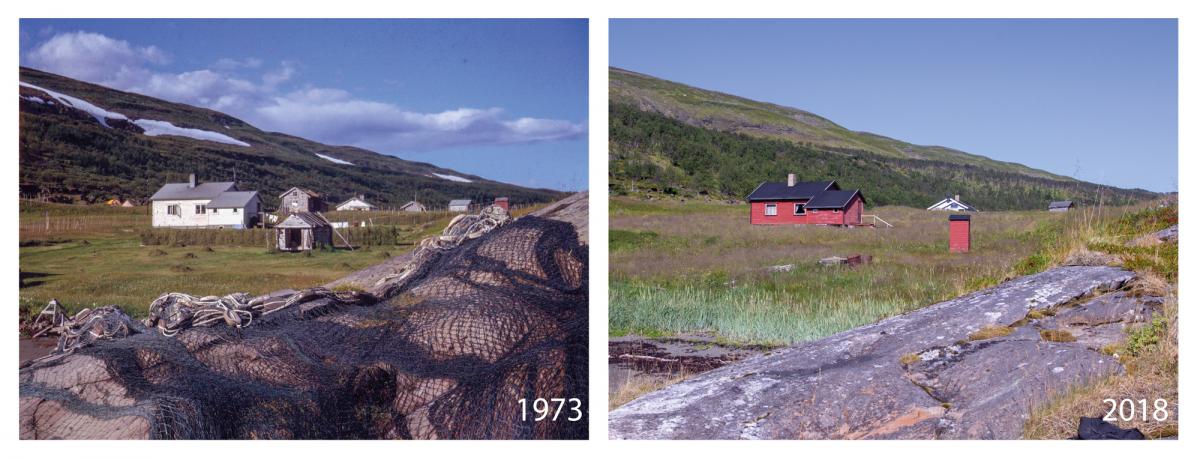The social science of climate change Understand article
In Arctic regions, landscapes are changing fast. This has profound effects on their biological systems, but how are communities and their traditional lifestyles affected?
I first visited Arctic Norway in 2016 as a geology student, spending two months exploring a remote valley to learn about its geology and to produce a geological map of the area. It was so exciting to climb out of my tent every morning and spend the day hunting for outcrops of rock that very few, if any, geologists had ever seen before. Although this idyllic landscape was hardly ever visited by other people, the effects of humankind were clear: climate change was making its mark. In 2018, I had the chance to return to document the effects of climate change on this landscape, so we could share with others how rapidly our world is changing.
How can we see the effects of climate change?
Today, climate change can be seen around the world. Changes are occurring most rapidly at high latitudes, such as towards Arctic regions. People living in these remote places are already noticing the changes happening around them and are being forced to adapt. This inspired my team to investigate climate change from a social science perspective, discovering the effects on remote communities and what this might mean for their future.
We are all constantly taking photographs of people and landscapes, and such images can be used as a tool to look back into the past. By returning to the location of an old photograph and taking a photograph of the same landscape today, from exactly the same viewpoint, it is possible to identify small-scale changes. This technique, called rephotography, has been widely used to capture how cities are changing through time. But it can also be used to examine how landscapes are changing due to climate change – for example, the melting of Arctic glaciers is making landscapes almost unrecognisable (figure 1).

Spitsbergen Retraced
We chose to visit the Varanger Peninsula in Finnmark, Norway, to capture how rapidly the landscape is changing, even below the tundra line. I collected old photographs showing the landscapes of the Varanger Peninsula from previous expeditions to the area between 1959 and 2016. Once the location of each photograph was pinpointed, we visited it in 2018 to retake a modern version of the photograph. We also spoke to local people about their opinions of climate change and its effects.
Trees in changing environments
Some of the northernmost trees in the world are small silver birch, and as the climate warms these trees are likely to flourish and become bigger. More trees should also be able to survive at higher latitudes, allowing the treeline to move further north. This trend can be seen in our rephotography: over time, the trees have become larger and the landscape has become greener overall (figure 2). In this image pair, the distant hillsides are visibly greener today (2018) than they were in 1974.

Bruce Levell (left image)/Finnmark: Past Present Future (right image)
The warming climate also allows other species to live at higher latitudes. In this area of Norway, rising temperatures are increasing the survival rates of some moths of the family Geometridae: the autumnal moth, the winter moth and the scarce umber moth. In the autumn, these moths lay eggs on the branches of the silver birch, where they remain over the winter until they hatch the following spring. The eggs can tolerate temperatures down to around -37°C, and with warmer winters more of these eggs hatch, producing greater numbers of caterpillars. Once hatched, the caterpillars strip the new silver birch leaves from the trees, killing large numbers of trees and leaving piles of fallen tree trunks where there once was forest.
The number of caterpillars varies each year. There are massive outbreaks in some years, and recently these very damaging outbreaks have become more frequent, preventing the silver birch trees from fully recovering in between. The result is that, where there were once valleys with healthy forests, there are now just leafless trees, many of them dead. This effect is also very visible in figure 2, where the forest in the foreground has been destroyed by moth damage.
Effects on local communities
Many people living in areas like the remote Varanger Peninsula are dependent on the land, and their livelihoods are threatened by climate change. Living lives so connected to the land, these people notice small changes that are overlooked by others.
Saami people
Inland, the indigenous Saami people use the vast wilderness for reindeer herding. As the climate warms, the number of days with snow cover is decreasing, and more frequent winter thaws followed by refreezing are making it more difficult for reindeer to dig through the snow to reach the lichen beneath. The northward movement of the treeline will increase the amount of vegetation available for reindeer, but the changing environment may decrease its nutritional value and threaten the lichen ecosystems. The snow is now less predictable and is arriving later. Routes that have traditionally been safe are now more dangerous, as ice cover is thinner and melting occurs earlier. Conditions are less suitable for travel by snowmobile, and there is an increased avalanche risk in mountainous regions (Jaakkola et al., 2018). All of these changes are increasing the risk of accidents among the Saami people. The introduction of modern technologies and additional foodstuffs may help these people adapt to the changes, but there is a real risk that their traditional culture may be lost.

Harvey Barrison/Flickr, CC BY-NC-SA 2.0
Fishing
Along the coastline of the Varanger Peninsula, the Norwegian people are fishers. Many live in small, remote villages accessible only on foot or by boat. However, the population is now decreasing as young people find more career opportunities elsewhere. In Gulgo, formerly a thriving fishing community, a jetty that once served large boats has been left to decay, with the area now visited only by locals enjoying a peaceful weekend in their cabins. As the climate changes, so too does the weather. With rougher seas, it has become harder to fish further away, so the remaining fishermen are no longer sailing the few extra hours from the main town (Berlevaag) to reach Gulgo.
In Stappogiede, a former small fishing community accessible only by boat, we met a man and his mother who were visiting a remote cabin that had once been the family home, but which is now used only for leisure. With no permanent residents, there is less fishing here now than in 1973. Comparing images from 1973 and 2018 (figure 3) shows an increase in the surrounding vegetation over time: the man could remember his father having to walk a long way to collect firewood, but today it is on their doorstep. In fact, isolated Stappogiede is one of the few places relatively unaffected by moth outbreaks so far.

Bruce Levell (left image)/Finnmark: Past Present Future (right image)
Tourism
A lot of the concerns that the local people have about climate change focus on the effects that the moth damage may have on tourism. One local described the moth damage nearby as “like a nuclear bomb has gone off”, as there are so many dead and fallen trees. The Varanger Peninsula is now visited by many tourists driving the length of the beautiful Norwegian coastline, providing much-needed income for this remote area. Most visitors are unaware of the moth damage in the area, as the effects are not visible from the road. However, for an area attracting tourists with its rugged beauty, the next moth outbreak could be disastrous for this growing industry, which benefits the area’s economy.
One of the ways this economic change can be seen is in the variety of foods available in local supermarkets: in Berlevaag, the northernmost fishing town on the Varanger Peninsula, there were no expensive luxuries such as cake available to buy in 2016, but in 2018 it was possible to buy not only cake but also exotic fruits such as kiwis. With globalisation, the diet of local people is shifting from being completely seasonal to being supplemented by imports. As people are less reliant on food from their local environment, the culture of eating elk in the autumn and winter, cod in the spring, and halibut and salmon in the summer may be lost.
Local culture
As people of working age move to areas with better job prospects, the local population becomes more elderly and there are fewer young people to learn traditions. Children at the school in Berlevaag are still taught how to skin a reindeer, but this is now more a piece of their culture than a practical skill. Globalisation also brings positive effects: there is now a larger market for local foods considered unusual elsewhere, such as reindeer. Traditional items crafted by local Saami people also now have a larger market, with both tourists and online shoppers from around the world buying decorative items and traditional knives.
Future prospects
Climate change is not just a problem of the future: its effects can already be seen today. In remote areas largely forgotten by the rest of the connected world, communities are being forced to adapt their livelihoods and cultures to the reality of climate change. If international efforts succeed in limiting global warming as much as possible, protecting traditional ways of life will be another likely benefit.
Acknowledgements
The author would like to thank the members of the expedition team, as well as the Royal Geographical Society, the University of Oxford, Gilchrist Education Trust, the Andrew Scott Memorial Fund, and the Scottish Arctic Club for funding the expedition.
References
- Jaakkola JJK, Juntunen S, Näkkäläjärvi K (2018) The holistic effects of climate change on the culture, well-being and health of the Saami, the only indigenous people in the European Union. Current Environmental Health Reports 5: 401–417.
Resources
- Learn more about moth damage on the Varanger Peninsula by visiting the Birch Moth website.
- Read about the author’s adventures on the Finnmark expedition in Norway by visiting the expedition website.
Review
Climate change might still be an abstract idea for many students. We read a lot about future changes and global goals – but this article describes several consequences that are already happening. We find out about the changes that communities are facing and some of the mechanisms of change, which show how everything is connected.
The article could be used for guided discussions in class about what we can do about the negative effects of climate change, how communities can deal with the effects of climate change – and how we can learn from past mistakes and manage further changes. Comprehension questions could include:
- Why have the birch trees in the Finnmark region died?
- What happens to different species in a region when the climate changes?
The content is also interesting for teachers in social sciences, for discussions on how human culture is changing due to globalisation.
Finally, the article can serve as an environmental wake-up call: it’s time to act!
Ingela Bursjöö, science teacher and researcher, Montessori School Elyseum, Gothenburg, Sweden





